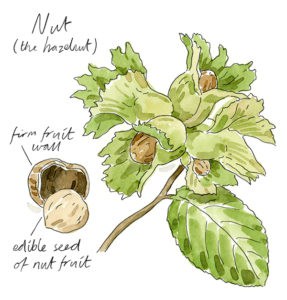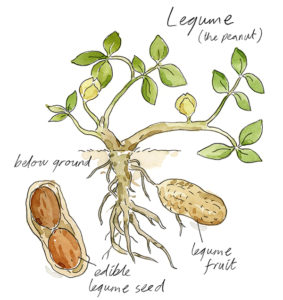
From forests to fields, old-world groves to new-world plantations, caveman dwellings to your local dive bar: Nuts are found wherever hungry humans have roamed. Shielded by glowing leafy greens and sweet, ripe fruits that tempt us, nuts lurk in the background, encased in rigid, unyielding shells. But the moment our ancestors figured out how to smash two rocks together, the treasures within became diet fixtures.

It makes sense: Since the nuts we eat are meant to give life to new bushes or trees, they’re packed with nutrients, compounds that protect against disease, and energy—often in the form of oil and heart-healthy fats. Nuts exude fragrant compounds when fresh; cooking them encourages reactions between amino acids and sugars, yielding a multitude of evolving aromas.
Today we toss back the easy-to-munch morsels without giving much thought to where they come from—but botany reveals some mind-bending facts. Did you know that a nut is actually a fruit? It’s a specific type of fruit with a single seed that rests, unattached, inside a hard, closed shell. Think of the hazelnut: On the tree’s slim branches hang dry, reddish-brown, heart-shaped pods. When cracked, the small, beige, aromatic kernels emerge. This is the seed, the edible part of the nut fruit.

The plot thickens. Did you know that almonds, pecans, walnuts, and a whole range of other “nuts” are not actually nuts at all? Consider the almond: On the tree it’s a soft, green, oval fruit belying little hint of what’s inside. Peel back the fleshy exterior and you’ll find a pit resembling a peach or plum core. That’s because, like peaches and plums, the almond is a drupe: a fleshy fruit with a stone inside. Within that stone is the seed, what we know as the edible almond.
Complicating things further, the peanut is in an entirely different category. Unlike the pods of drupes and nuts that hang from trees, peanut pods grow underground beneath bushes. Classified as a legume, the peanut is a closer relative to beans and peas than to any of the other nuts we eat.

While botany offers a narrow definition of the nut, the seeds or seed-containing fruits found in nuts, drupes, or legumes dohave much in common: They’re nutrient-dense with an oily composition, an aromatic aura, and a delicious multitude of uses. That’s why our guide focuses on “culinary” nuts, a widely accepted, broad category that includes a range of drupes and legumes—because a (nut) party is more fun when everyone’s invited.



